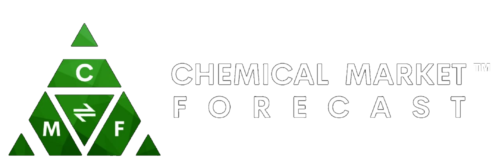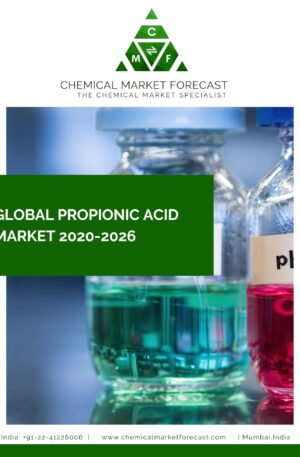Global Activated Carbon Fiber Market
Activated carbon fiber (ACF) is a form of carbon that has been treated with oxygen or another oxidizing agent to increase its porosity and surface area. ACF is used for its high adsorption capacity, making it suitable for a range of applications such as air purification, water treatment, and energy storage. Other applications include use in fuel cells, catalysts, and environmental remediation. ACF is lightweight, durable, and has a high mechanical strength, making it ideal for use in the automotive and aerospace industries. Additionally, it is biodegradable and has a low environmental impact, making it a more sustainable option compared to traditional materials.
The global activated carbon fiber market is expected to grow at a significant rate in the coming years, driven by increasing demand for high-performance, lightweight, and cost-effective materials for various applications. The water treatment and air purification, automotive, and energy sectors are expected to be the key drivers of growth.
The raw materials used to produce activated carbon fiber (ACF) includes the following, PAN is the most common raw material used to produce ACF. It is a synthetic polymer that is treated with an oxidizing agent to form a precursor fiber, which is then carbonized and activated. Rayon is another raw material used to produce ACF. It is a naturally derived fiber that is processed and treated with an oxidizing agent to form a precursor fiber, which is then carbonized and activated. Coconut shell is a natural raw material used to produce ACF. It is activated using physical or chemical methods to produce ACF with high surface area and pore volume. Wood is another natural raw material used to produce ACF. It is activated using physical or chemical methods to produce ACF with high surface area and pore volume. Bamboo is a natural raw material used to produce ACF. It is activated using physical or chemical methods to produce ACF with high surface area and pore volume. The choice of raw material depends on factors such as cost, availability, and the desired properties of the final product.
Some of the drawbacks of activated carbon fiber (ACF) includes. ACF is produced in limited quantities, which can result in a shortage of supply in the market. The production of ACF is a complex process that requires specialized equipment and expertise, making it challenging to scale up production. ACF has poor mechanical properties compared to other materials, making it less suitable for applications that require high strength and toughness.
The global activated carbon fiber market is segmented based on type, application, and region. Based on type, the market is segmented into PAN-based and rayon-based activated carbon fibers. Based on application, the market is segmented into water treatment and air purification, automotive, energy, and others. Regionally, the market is segmented into North America, Europe, Asia-Pacific, and Rest of the World.
Some of the key competitors in the global activated carbon fiber market are Toray Industries, Inc., SGL Carbon, TEIJIN LIMITED, Cabot Corporation, Kuraray Co., Ltd., Nippon Graphite Fiber Corporation, JEFLON Co., Ltd., Elora Carbon Fiber Co., Ltd., and Lanxess AG, among others.
TABLE OF CONTENT
Global Activated Carbon Fiber Market Report
1 Market Introduction of Global Activated Carbon Fiber Market Report
2 Market Segmentation of Activated Carbon Fiber Market Report
2.1 Activated Carbon Fiber Market Segmentation By Region
2.2 Activated Carbon Fiber Market Segmentation By Type
2.3 Activated Carbon Fiber Market Segmentation By Crop Type
3 Cost Structure of Global Activated Carbon Fiber Market Report
4 Country Analysis of Global Activated Carbon Fiber Market Report
4.1 China
4.1.1 Activated Carbon Fiber Market Size in China
4.1.2 Activated Carbon Fiber Market Trends & Analysis in China
4.1.3 Key Activated Carbon Fiber companies in China
4.1.4 Regulatory Framework of Activated Carbon Fiber Market in China
4.2 Germany
4.2.1 Activated Carbon Fiber Market Size in Germany
4.2.2 Activated Carbon Fiber Market Trends & Analysis in Germany
4.2.3 Key Activated Carbon Fiber companies in Germany
4.2.4 Regulatory Framework of Activated Carbon Fiber Market in Germany
4.3 France
4.3.1 Activated Carbon Fiber Market Size in France
4.3.2 Activated Carbon Fiber Market Trends & Analysis in France
4.3.3 Key Activated Carbon Fiber companies in France
4.3.4 Regulatory Framework of Activated Carbon Fiber Market in France
4.4 Italy
4.4.1 Activated Carbon Fiber Market Size in Italy
4.4.2 Activated Carbon Fiber Market Trends & Analysis in Italy
4.4.3 Key Activated Carbon Fiber companies in Italy
4.4.4 Regulatory Framework of Activated Carbon Fiber Market in Italy
4.5 Netherland
4.5.1 Activated Carbon Fiber Market Size in Netherland
4.5.2 Activated Carbon Fiber Market Trends & Analysis in Netherland
4.5.3 Key Activated Carbon Fiber companies in Netherland
4.5.4 Regulatory Framework of Activated Carbon Fiber Market in Netherland
4.6 Russia
4.6.1 Activated Carbon Fiber Market Size in Russia
4.6.2 Activated Carbon Fiber Market Trends & Analysis in Russia
4.6.3 Key Activated Carbon Fiber companies in Russia
4.6.4 Regulatory Framework of Activated Carbon Fiber Market in Russia
4.7 Canada
4.7.1 Activated Carbon Fiber Market Size in Canada
4.7.2 Activated Carbon Fiber Market Trends & Analysis in Canada
4.7.3 Key Activated Carbon Fiber companies in Canada
4.7.4 Regulatory Framework of Activated Carbon Fiber Market in Canada
4.8 Mexico
4.8.1 Activated Carbon Fiber Market Size in Mexico
4.8.2 Activated Carbon Fiber Market Trends & Analysis in Mexico
4.8.3 Key Activated Carbon Fiber companies in Mexico
4.8.4 Regulatory Framework of Activated Carbon Fiber Market in Mexico
4.9 Singapore
4.9.1 Activated Carbon Fiber Market Size in Singapore
4.9.2 Activated Carbon Fiber Market Trends & Analysis in Singapore
4.9.3 Key Activated Carbon Fiber companies in Singapore
4.9.4 Regulatory Framework of Activated Carbon Fiber Market in Singapore
4.10 United Kingdom
4.10.1 Activated Carbon Fiber Market Size in United Kingdom
4.10.2 Activated Carbon Fiber Market Trends & Analysis in United Kingdom
4.10.3 Key Activated Carbon Fiber companies in United Kingdom
4.10.4 Regulatory Framework of Activated Carbon Fiber Market in United Kingdom
4.11 Switzerland
4.11.1 Market Size in Switzerland
4.11.2 Market Trends & Analysis in Switzerland
4.11.3 Key Activated Carbon Fiber companies in Switzerland
4.11.4 Regulatory Framework of Activated Carbon Fiber Market in Switzerland
4.12 Brazil
4.12.1 Market Size in Brazil
4.12.2 Market Trends & Analysis in Brazil
4.12.3 Key Activated Carbon Fiber companies in Brazil
4.12.4 Regulatory Framework of Activated Carbon Fiber Market in Brazil
4.13 USA
4.13.1 Market Size in US
4.13.2 Market Trends & Analysis in US
4.13.3 Key Activated Carbon Fiber companies in US
4.13.4 Regulatory Framework of Activated Carbon Fiber Market in US
4.14 Japan
4.14.1 Market Size in Japan
4.14.2 Market Trends & Analysis in Japan
4.14.3 Key Activated Carbon Fiber companies in Japan
4.14.4 Regulatory Framework of Activated Carbon Fiber Market in Japan
4.15 South Korea
4.15.1 Market Size in South Korea
4.15.2 Market Trends & Analysis in South Korea
4.15.3 Key Activated Carbon Fiber companies in South Korea
4.15.4 Regulatory Framework of Activated Carbon Fiber Market in South Korea
4.16 India
4.16.1 Market Size in India
4.16.2 Market Trends & Analysis in India
4.16.3 Key Activated Carbon Fiber companies in India
4.16.4 Regulatory Framework of Activated Carbon Fiber Market in India
4.17 Thailand
4.17.1 Market Size in Thailand
4.17.2 Market Trends & Analysis in Thailand
4.17.3 Key Activated Carbon Fiber companies in Thailand
4.17.4 Regulatory Framework of Activated Carbon Fiber Market in Thailand
4.18 Russia
4.18.1 Market Size in Russia
4.18.2 Market Trends & Analysis in Russia
4.18.3 Key Activated Carbon Fiber companies in Russia
4.18.4 Regulatory Framework of Activated Carbon Fiber Market in Russia
4.19 Malaysia
4.19.1 Market Size in Malaysia
4.19.2 Market Trends & Analysis in Malaysia
4.19.3 Key Activated Carbon Fiber companies in Malaysia
4.19.4 Regulatory Framework of Activated Carbon Fiber Market in Malaysia
4.20 Saudi Arabia
4.20.1 Market Size in Saudi Arabia
4.20.2 Market Trends & Analysis in Saudi Arabia
4.20.3 Key Activated Carbon Fiber companies in Saudi Arabia
4.20.4 Regulatory Framework of Activated Carbon Fiber Market in Saudi Arabia
5 Activated Carbon Fiber Market Trends
5.1 Activated Carbon Fiber Market Trends- Key Drivers
5.2 Activated Carbon Fiber Market Trends- Key Restraints
5.3 Activated Carbon Fiber Market Trends- Key Challenges
5.4 Porter’s Five Forces Analysis of Activated Carbon Fiber Market
5.5 PEST Analysis- Activated Carbon Fiber Market
6 Activated Carbon Fiber Market Forecast
6.1 Activated Carbon Fiber Market Forecast By Region
6.1.1 North America
6.1.2 Europe
6.1.3 APAC
6.1.4 Middle East
6.1.5 ROW
6.2 Activated Carbon Fiber Market Forecast By Type
6.2.1 Fertilizer
6.2.2 Pesticide
6.3 Activated Carbon Fiber Market Forecast By Crop Type
6.3.1 Fruits & Vegetables
6.3.2 Oilseed and Pulses
6.3.3 Cereals & Grains
6.3.4 Other
7 Supply Chain of the Activated Carbon Fiber Market Analysis
8 Opportunity Analysis
9 Scenario Analysis
10 Key Company Profiles
11 Strategic Conclusions – Activated Carbon Fiber Market Report
12 Abbreviations used in Activated Carbon Fiber Market Report






Reviews
There are no reviews yet.